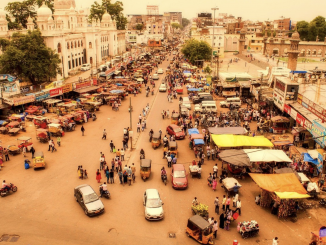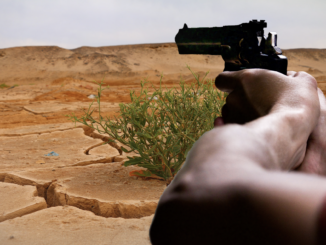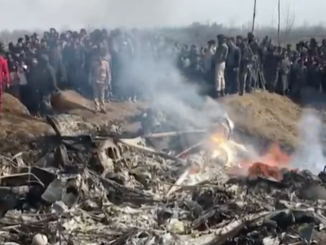
“The crisis consists precisely in the fact that the old is dying and the new cannot be born; in this interregnum a great variety of morbid symptoms appear.” – Antonio Gramsci, Prison Notebooks.
The fault-lines were there, but in disguise. Whether you perceive it as a blessing in disguise to set forth the journey of revival and to start anew or think of it as an unprecedented crisis predestined to paralyze humankind, the pandemic acted as a whistleblower and illuminated the existing fault-lines in the system. From the health and economic sectors to the educational, industrial, and technological spheres, the pandemic has inadvertently agitated the institutional and structural standings of the contemporary system of even in the richest countries of the world.
It is not only a health crisis, but also a socio-economic crisis.
In the world grappled by the pandemic, there exists Pakistan: a country that was already in an economic crisis when COVID-19 infiltrated its territories from the Taftan border, Balochistan. The mismanagement of the administration and inadequately slow testing response at the border caused the deadly virus to pave its way into the country. The curve is starting to flatten in Pakistan, however gradually, but the havoc it created has raised concerns.
In the early days of the pandemic, the debate of economy versus health started. The government realized the appalling effects of the lockdown on the economy and poor segment of the country and opposed the lockdown even after imposing it countrywide for over a month. Faced with the failure in implementing a strict lockdown, the administration opted for ‘smart’ or selective lockdown. Although the cases have been receding ever since, there is no certainty that the virus will fade away through the partial lockdown strategy. If the vaccine is delayed and the virus is prolonged, it will affect the confidence of investors, which Pakistan desperately needs, and the expenditure on treatment will increase as well, which Pakistan cannot afford.
“You cannot expect a healthy economy in an unhealthy environment,” said writer and historian Dr. Ammar Ali Jan when I asked him about the efficacy of the ‘smart’ lockdown.
The second debate was between the government and doctors. On 10 March, doctors held protests in Lahore after the government of Punjab passed the MTI Act 2019 in an attempt to privatize the health sector to fulfil the obligations of austerity the PTI administration made with the IMF. The tensions, however, were diffused after negotiations between the protestors and the government.
Moreover, the insufficient supply of Personal Protective Equipment (PPE) in hospitals was a significant bone of contention. The Grand Health Alliance (GHA) criticized the government for not providing enough PPE and health supplies, on the one hand, and the government held a confrontational approach of denial against the GHA, on the other. After the death of a young doctor from Gilgit-Baltistan and a nurse from Gujrat, doctors held a hunger strike for a week and a half in Lahore on 16 April. The protests ended on 1 May after another round of negotiations and the government’s promise to facilitate the health workers with required medical supplies. In addition, health sector funding was only increased by 1.86% as compared to the last year in the recently announced budget 2020-21.
Finally, the confrontation of the federal administration versus Sindh administration manifested national disunity and political instability. On one hand, the federal government was blaming the 18th amendment for not having national control and transparency, and on the other, the Sindh government was criticizing the federal administration for inadequate strategies and measures.
Apart from the controversial confrontations, there was ambiguity and confusion in communication, messaging, and awareness spheres. the Prime Minister was displaying his personal views that one need not fear for it is just a viral flu, while the provincial governments were announcing strict lockdowns. This emanated disbelief in the people. Furthermore, the inaccurate and opaque number of cases made people believe that the rising cases are a conspiracy by the government to draw in financial aid.
Then there was the resistance from religious clerics. The government failed to impose lockdown on mosques. Where doctors were warning the people and the government to stay in homes, the mullah said that the lockdown is not necessarily applicable to mosques. The latter prevailed for it is them that controls the masses. Lastly, the pandemic highlighted a digital and educational divide in the system. In June, students from remote areas, Gilgit-Baltistan, Khyber Pakhtunkhwa, and Balochistan, protested against internet inequities. Students in Quetta were arrested under Section 144 while they were protesting for internet access. The technological inequities induced the exclusion of underprivileged students.
On a positive note, Pakistan is manufacturing ventilators locally for the first time and the current situation is relatively better in the hospitals. Moreover, Pakistan’s Prime Minister Imran Khan led the global campaign of debt relief in these desperate times for developing and underdeveloped countries. The PM also introduced the Ehsaas relief fund and the Tiger Corona Force to distribute basic necessities in unreachable areas, but the programme was exploited by the representatives and did not reach the targeted population. On the educational front, a Tele-school channel was launched to reach a larger audience.
These are all short-term measures that will not work in the wake of another crisis-like situation. Can we remain in this permanent short-termism or should we take this pandemic as a lesson in disguise and focus on long-term programmes?
For a crisis like this, the main issues the government faced were incapable structure, an unreachable public, under-invested defective health system, and the absence of effective local governments and contingency plans. For Pakistan to address a crisis, a long-term strategy needs to be mapped out. For instance, the establishment of effective local governments can help reach the general public. Second, the government can develop a national contingency team comprising the youth of Pakistan instead of a party-based Tiger Force. Third, much debate is needed to map out contingency and counter-disaster plans to decisively and proactively implement policies.
Lastly, the investment in the health sector is the need of the hour. The world is en route towards a climate emergency and about 40% of people in Pakistan die from water pollution. Air pollution is another serious factor. For a long-term health policy, the climate emergency is a significant constituent. Pakistan needs to make policies with respect to social and public health, so that it has the capacity to confront a crisis.
The pandemic has highlighted the deformities in the existing system. The crisis is a symptom of a diseased system. The existing system is faulty and unworkable, and a better replacement is not in sight yet. Therefore, until we find a better replacement, the ill and defective system will induce grotesque figures to surface in the shape of crises.
![]()




The wall street journal has recently lauded Pakistan’s efforts
The situation is getting better it means. But the trajectory was distorted
Comprehensive view on Subject and well articulated… and Well said “You cannot expect a healthy economy in an unhealthy environment” Government must check these policy options given by author